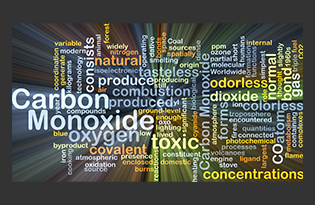Do you know the signs of carbon monoxide poisoning?
2/17/2025 by Denise Dupras, M.D., Ph.D.

Each year, more than 20,000 people visit emergency departments and over 400 die from accidental carbon monoxide poisoning. Everyone is at risk for carbon monoxide poisoning, especially infants, the elderly population, and people with heart or lung disease.
What do you know about the signs and effects of carbon monoxide poisoning? Read on for some answers to common questions about carbon monoxide.
What is carbon monoxide, and where does it come from?
Carbon monoxide is a colorless, odorless gas found in the fumes from stoves, lanterns, gas ranges and other appliances, portable generators, grills, and burning wood or charcoal. The risk of exposure increases in winter or during power outages because people use alternative heat sources indoors, including portable gas camp stoves, generators, ranges or charcoal grills.
How can you recognize carbon monoxide poisoning?
While symptoms of carbon monoxide poisoning are not specific, they can include headache, dizziness, weakness, nausea, confusion and even chest pain. High levels of carbon monoxide can lead to unconsciousness and death. Carbon monoxide is also harmful to your pets.
What should you do if carbon monoxide levels are high?
If you suspect carbon monoxide poisoning, get fresh air. Open the windows, go outside and go to another location. If you feel ill or think you may have carbon monoxide poisoning, seek medical attention. Once you're feeling better, have your local gas utility company check any gas appliances, such as ranges, furnaces, dryers or water heaters, to be sure they're working correctly.
How can you protect your family?
- Ensure you have working carbon monoxide detectors. Installing them in your home and regularly changing the batteries is the first step.
- Have your wood-burning stove or fireplace inspected regularly.
- Never leave a car or gasoline-powered engine in an enclosed area.
The Centers for Disease Control and Prevention (CDC) offers tips for preventing carbon monoxide poisoning and fact sheets about carbon monoxide poisoning in other languages.
For more information, check out the carbon monoxide resources from the CDC and the Minnesota Department of Health.
Denise Dupras, M.D., Ph.D., is a physician in Primary Care in Rochester and Kasson's Division of Community Internal Medicine, Geriatrics and Palliative Care. She completed her medical and doctoral degrees at Mayo Clinic Alix School of Medicine and her residency in internal medicine at Mayo Clinic in Rochester. Her interests include medical education and evidence-based medicine.
